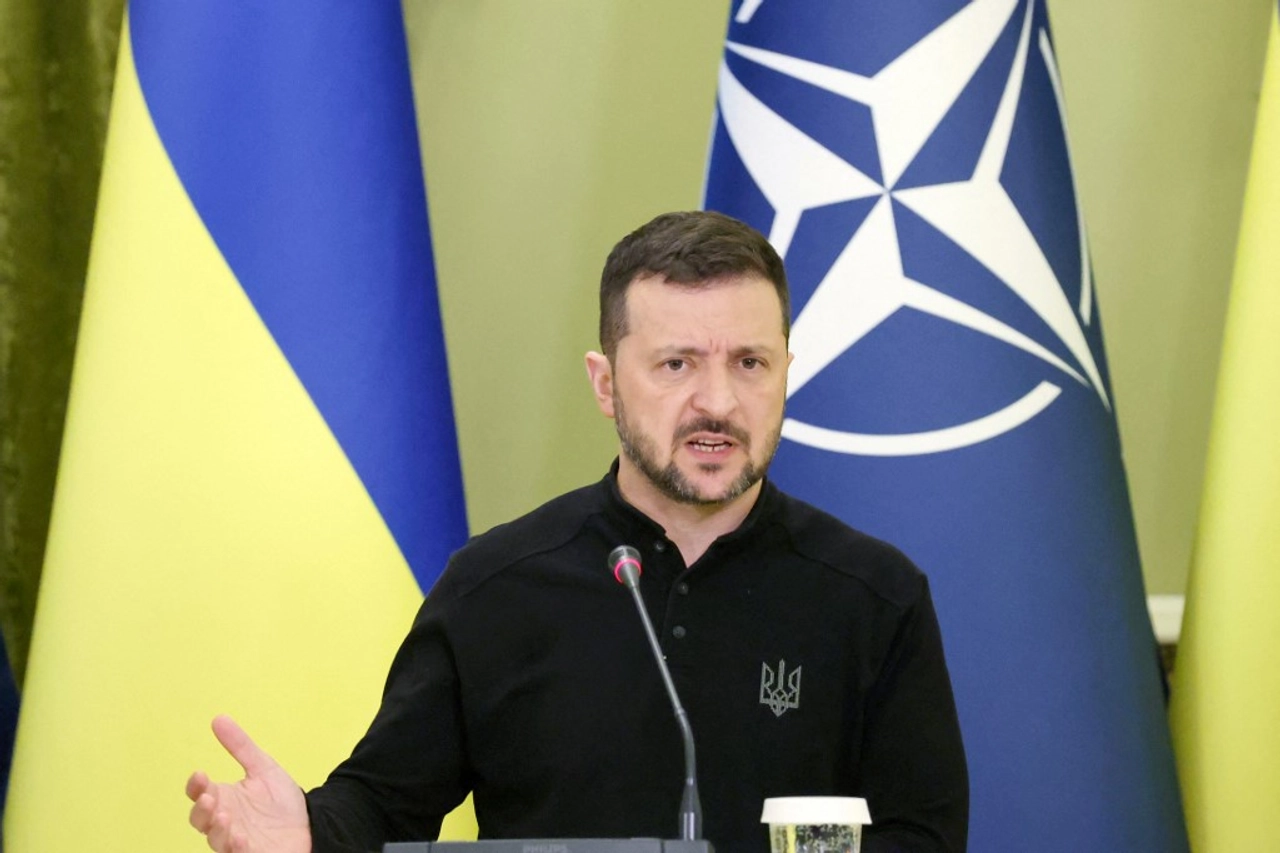Trump Team’s Proposed Peace Plan for Ukraine
20-Year NATO Freeze and Demilitarized Zone
In a striking move, President-elect Donald Trump’s team has reportedly proposed a peace plan to end the ongoing conflict in Ukraine, with terms that include a 20-year freeze on Ukraine’s NATO membership bid and the establishment of a demilitarized zone along the current front lines. The Wall Street Journal revealed this proposed plan on Thursday, which also excludes any involvement of US or UN forces in policing the ceasefire. Instead, the onus would be on European allies to monitor and maintain peace.
Trump’s Peace Proposal: Key Elements and Controversial Terms
The Trump team’s alleged peace plan sets out a 20-year freeze on Ukraine’s NATO membership ambitions, essentially removing the nation from NATO’s future expansion plans for two decades. The proposition to limit NATO access, if accepted, would fulfill one of Russia’s long-standing demands, which has been to prevent Ukraine from becoming part of the Western military alliance.
A second major aspect of the proposal is the creation of a demilitarized zone along the existing battle lines, effectively freezing the current front lines. The Trump team suggested that European allies, including Poland, Germany, Britain, and France, take on the responsibility of overseeing and enforcing this area. This arrangement would avoid placing US or UN troops in Ukraine, a measure some analysts say could reduce direct Western involvement in the region.
Maintaining Support Without Troop Deployment
While the proposal excludes direct military enforcement by US or UN forces, sources close to Trump’s team claim that Washington would continue to supply military aid to Ukraine. This would include weapons, military training, and intelligence-sharing to help deter any future Russian advances. However, Trump’s advisors have hinted at the possibility of suspending military aid as a way to pressure Ukraine into accepting peace terms, potentially using the aid as leverage to initiate negotiations with Russia.
In recent comments, Trump reiterated his commitment to ending the Ukraine conflict swiftly, though he has remained vague about the specifics. “I can’t give you those plans because if I give you those plans, I’m not going to be able to use them,” Trump said during his campaign, maintaining secrecy around his intended strategy.
A Divided Response Among Ukrainians
The reaction to Trump’s proposed peace plan has been divided. Some Ukrainians worry about the future of American support, especially given Trump’s vice president JD Vance’s previously stated opposition to continued US aid for Ukraine. However, others hold out hope that Trump’s promises of a swift end to the war may provide relief.
Anton, a real estate manager in Kyiv, expressed both weariness and hope in light of the news. “For many Ukrainians, Trump represents a hope for a swift end to the war. People are weary – losing family members, seeing children and neighbors suffer, of living under constant fire,” he told the Kyiv Post. Anton shared that while many Ukrainians express a willingness to fight indefinitely, there remains a desire for an end to the bloodshed and a return to peace.
Reports from Ukrainian sources indicate a mixed sentiment: some citizens feel Trump’s approach might offer a quicker route to peace, while others are cautious about compromising their sovereignty or NATO aspirations in exchange for uncertain terms.
US and Global Reactions to the Proposed Deal
In the US, Trump’s proposal has stirred debate. Some foreign policy experts warn that a NATO freeze could signal weakened Western support and may embolden Russian ambitions. On the other hand, Trump’s plan to keep the demilitarized zone under European monitoring could reduce the US’s direct military involvement, which some see as a step toward de-escalation and a possible reduction of nuclear risks.
From the Biden Administration’s standpoint, US support for Ukraine has been a priority, with President Biden emphasizing Ukraine’s right to sovereignty and self-determination. Biden has previously stated that any peace deal must include Kyiv’s approval, which, given Ukraine’s current position, makes acceptance of the 20-year NATO freeze highly unlikely. The notion of suspending military aid as a negotiation tactic could also create divisions within US politics, as both parties weigh the implications of reduced aid in favor of pushing peace talks.
A Controversial Path to Peace?
As President-elect Trump’s team drafts and refines this proposal, the question remains: Will Trump’s approach bring the swift resolution he has promised, or will it spark new complications in an already volatile region? With no clear signals from either Russia or Ukraine to engage in such a plan, Trump’s proposed deal may face substantial obstacles before it reaches the negotiating table.
For now, Ukrainians, Europeans, and Americans are left speculating on whether Trump’s team can bring both sides together and what concessions Ukraine might be willing to consider for peace. The stakes are high, and as Trump prepares to take office, the world will be closely watching how his administration navigates this delicate and deeply polarized conflict.
